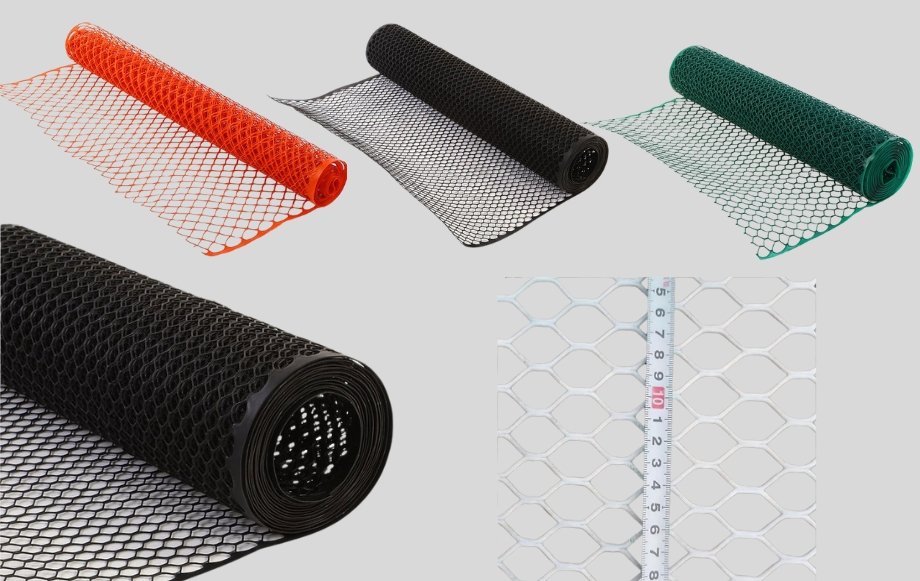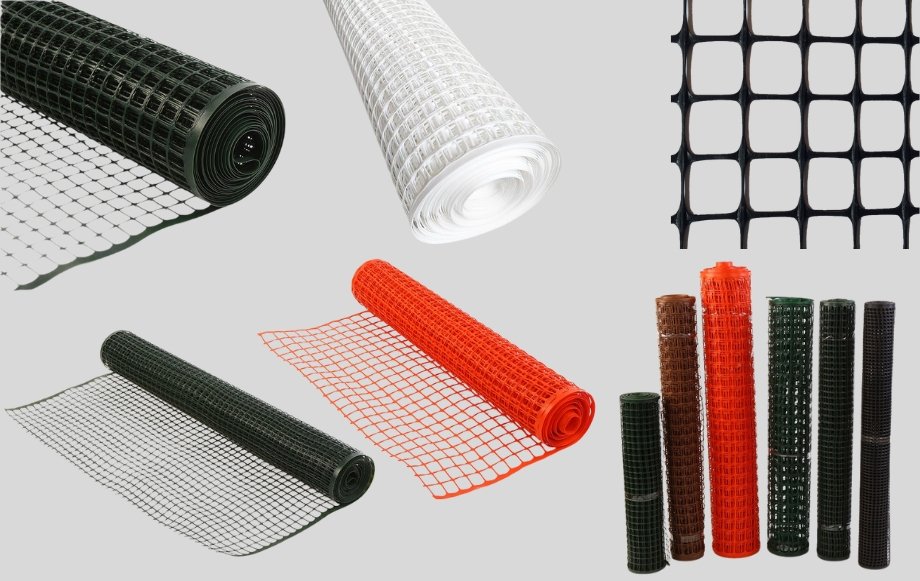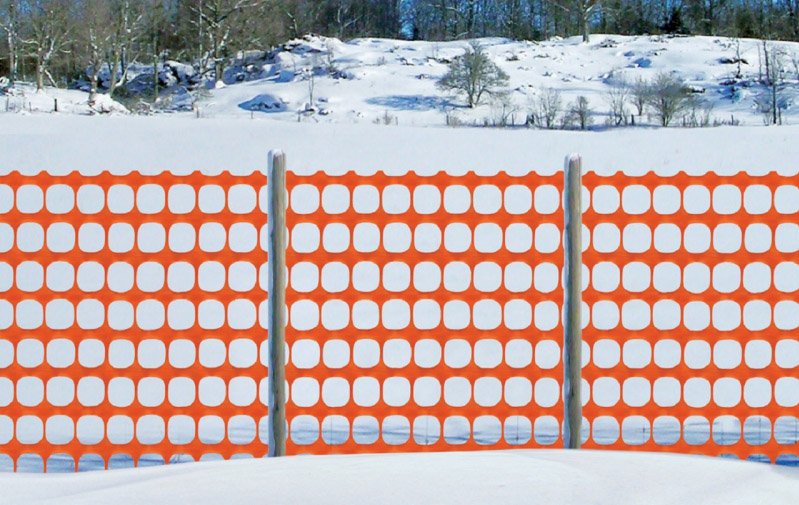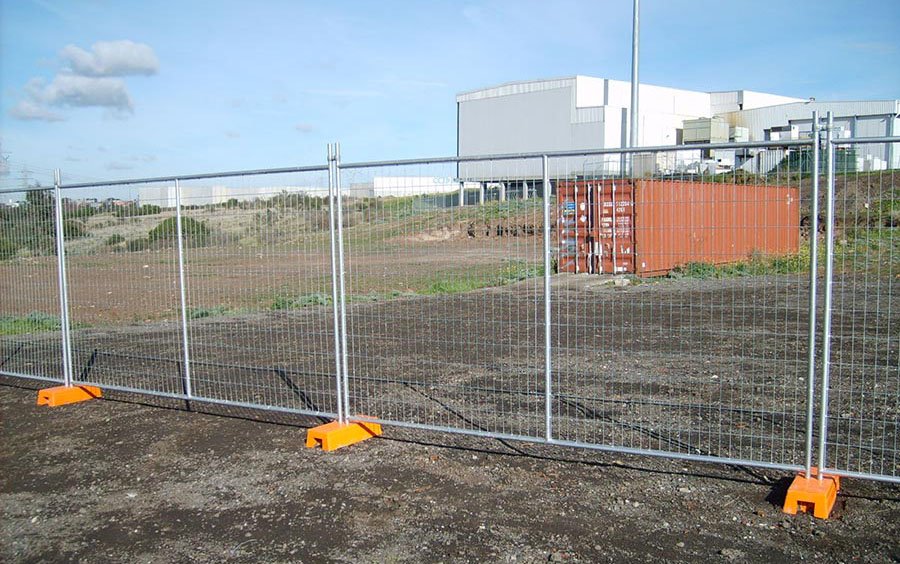Concerns regarding barriers and safety can be difficult to manage, yet orange safety fences provide an effective solution. These fences are constructed to clearly outline areas that are dangerous or off-limits to safeguard both farmers and the community. This article explores how orange colored fences can effectively tackle major security challenges, offering real-life instances that extend beyond their usual purposes.
1. What Is an Orange Safety Fence?
An orange fence represents a robust and versatile barrier made of high-quality materials, aimed at preventing unauthorized access to specific areas. These fences fulfill multiple roles, including protecting sensitive locations in industrial environments and promoting public safety at construction sites.

Note: Orange is a warning color defined by OSHA and the American National Standards Institute (ANSI)
2. Materials and Objectives of Orange Safety Fence
The plastic mesh is recognized for its appealing durability, adaptability, and long-lasting nature. This makes it a cost-effective and efficient approach to enforce safety guidelines in numerous settings. Primarily, these fences are utilized in hazardous zones at roadwork sites, excavation locations, and general construction areas. By helping to keep workers, bystanders, and animals away from these risks, they contribute significantly to safety. Their bright orange color enhances visibility, reducing the likelihood of accidents.
Additionally, they are often employed to manage crowds during various events. They provide a strong, tear-resistant barrier that endures diverse weather conditions and wear. Temporary construction fences are typically made from polypropylene (PP) by manufacturers. While this material is not essential, it is sufficiently resilient to resist deterioration even after repeated use. The bright color is intentionally chosen.
3. Different Types of Orange Safety Fences
1. Plastic Hexagonal Mesh Chicken Net
The six-sectioned, adjustable mesh net or orange safety net fence serves as a safety barrier designed for use on land. This fence is made of flexible, long-lasting materials and is arranged with hexagonal openings to accomplish its goal.

Important Features:
Shape: The fence’s hexagonal pattern, which is enhanced by small indentations, adds to its robustness and longevity.
Material: Usually made of polypropylene (PP) or polyethylene (PE), the material strikes a balance between strength and pliability.
Applications:
This kind of material is commonly used to confine tiny livestock, birds, and mammals. It is also used on building sites to create strong barriers or demarcate zones for projects that call for more dependable constructions.
Benefits:
The mesh’s durability is increased by its hexagonal opening components, and its tightly-knit construction successfully deters smaller animals. Additionally, it exhibits damage resistance, guaranteeing its longevity even under harsh conditions.
Perfect For: Flower arrangements, temporary fencing for clarity, and agricultural activities (like keeping chickens and training smaller animals).
2. Plastic Square Mesh
The adaptable plastic square mesh fence can be used for temporary crowd control or in construction zones, among other situations. It has square indentations spaced at regular intervals and is made of sturdy plastic.
Features:
Shape: Depending on the needs, the mesh has square openings of varying sizes.
Material: Often made of UV-resistant polypropylene, this material is strong even in the presence of sunshine.
Applications:
This type of fencing is frequently used in situations where durability and visibility are essential. It is commonly used in flower design, crowd management at festivals, and for delineating zones on educational websites.
Benefits:
Because of the way the openings are shaped, square mesh fences improve visibility. They can be used to secure impediments for smaller tasks, create crowd barriers, or fence for sword fighting events because of their versatility.
3. Orange Snow Fence
Because of its special design, the snowstorm fence works well in cold climates. Complex circumstances might arise when snow builds up or is driven by the wind. This particular kind of fence helps keep snow from drifting and keeps too much snow off of roadways, driveways, and walkways.
Features:
Design: This fence’s narrow gaps let wind through while simultaneously trapping snow during storms to reduce buildup in unwanted areas.
Material: Usually made of HDPE (durable plastic), it is resistant to both extremes of heat and cold. In addition, it is resistant to wind and snow and will not fade in the sun.
Applications:
This fence works great for removing snow from parking lots, driveways, and roadways where snow tends to collect. In areas where snowdrifts are common, it is widely used to manage snow distribution and improve accessibility all winter long.
Benefits:
Snow fences are easy to erect and direct snow drifts away from trouble spots. They are resilient, low-maintenance, and readily adjusted to seasonal variations.
Perfect For: Handling snow during cold storms, especially on key roads and driveways.
4. Diamond-Shape Plastic Fence Netting
A flexible plastic safety fence or netting with diamond-shaped perforations and a gemstone design acts as a security barrier. This kind of fencing is frequently used to guarantee safety within spaces and mark temporary limits.
Features:
Design: The mesh’s unique appearance, which enhances strength and visibility, is modeled after jewels.
Material: Made of UV-resistant polypropylene, it is flexible and impervious to sun damage.
Applications:
This type of fencing is frequently used to demarcate dangerous regions or to keep unwelcome vehicles away from sensitive places. It is very useful for protecting plants or young seedlings and managing crowds.
Benefits:
The mesh’s gemstone shape combines flexibility and durability. The fence’s high visibility makes it easy to see from a distance, which is essential for safety in busy places.
Perfect For: Farm needs, construction and excavation areas, and short-term safety issues.
5. Temporary Fencing
A simple and quick way to create a temporary barrier for a short time is with a makeshift fence. This kind of fencing is meant for small-scale issues and is simple to put up or take down as needed.
Design: Although it can assume many different shapes, a temporary fence usually consists of a flexible net that is stretched between frames or poles.
Material: Usually composed of flexible and sturdy plastic, this short-term fix is easy to use and control. It frequently occurs in big pieces or panels.
Applications:
Short-term undertakings such as building sites, events, or barriers for certain tasks are appropriate for the temporary fence. It is used to control crowds, mark off limited areas, and keep people away from hazardous places.
Benefits:
Benefits include portability, ease of installation and disassembly, and a generally lower cost than permanent fencing. Makeshift fencing is also reusable, which makes it a flexible option for upcoming projects.
Ideal For: Temporary barriers for landscaping or maintenance tasks, construction sites, and festivals and celebrations.
4. Benefits of Orange Construction Fence
-
High Visibility
These fence barriers are very noticeable due to their vivid red and yellow colors. This high visibility is crucial for ensuring safety in hazardous areas. Bright shades are frequently used to indicate rules, traffic signals, and to secure gardens. They assist individuals in recognizing potential dangers, which helps decrease the risk of accidents.
-
Sturdy and Reusable
Constructed from robust materials, the red and yellow barriers are made to endure. They are designed to resist deterioration and are protected against UV damage. These barriers are long-lasting and offer a reusable solution for various projects.
Simple to Install and Remove
The straightforward design of the fence explanation and enables quick installation and removal. Owners and managers appreciate the convenience of setting up temporary divisions for different purposes. Taking down the barriers is easy, providing adaptability and cost savings for various uses.
5. How to Install an Orange Safety Fence

Items required:
- Orange safety netting (roll of plastic mesh)
- Fence supports (metal T-posts, wooden stakes, or plastic poles)
- Post driver or mallet
- Zip ties, clips for fencing, or wire
- Safety gloves
- Tape measure
- Scissors or a utility knife.
Step 1: Plan the Area
- Talk about how far away you intend to keep everything.
- Determine the size that has to be measured in order to determine how much fencing and how many posts are needed.
- If required, mark the entrances’ locations and corners.
Step 2: Install the Posts for the Fence
- To begin, place a post at one end of the space where the fence will be installed.
- The posts should ideally be spaced 6 to 8 feet apart to guarantee sufficient stability.
- Drive the post into the ground with a hammer or post driver until it is securely in place.
- For the entire area you are fencing, repeat these steps.
Step 3: Fasten the Fence
- Place the orange safety fencing material against the first post, starting with that one.
- To firmly fasten the fence, use wire, fence clips, or zip ties. (Recommendation: To guarantee strength and stability, fasten it at the top, center, and bottom.)
- Make sure the fence is taut, but avoid pulling it so tightly that it could tear.
- As you proceed, keep unrolling and fastening the fence at each post.
Step 4: Complete and Verify
- When you get to the final post, trim the fence to size with wire cutters or a utility knife.
- Securely fasten the final end to the last post.
- Examine the entire fence by walking around it, tightening any loose spots and making sure all the posts are in place.
6. Uses of Orange Safety Fence
The orange building fence is beneficial for more than merely being found at construction sites. It not only ensures safety for individuals but also outlines the area.
Construction Sites
Orange construction fences or building fences are placed around construction zones. These fences delineate the working area, which is crucial for the safety of workers, passersby, and animals. They are essential for establishing clear limits. The orange plastic safety fence has multiple functions beyond construction sites. It contributes to the safety of people while also marking the specified area.
Garden Fencing
Garden fences represent pretend sword battles in the garden. For homeowners, orange guardian safety barrier fences provide a smart method to protect their gardens. They depict images of barriers that keep wild hoofed creatures away from urban places to protect delicate flowers. Budget-friendly and straightforward to install, this fence is an excellent choice for marking property borders and keeping blooms safe.
Snow Fighting
During the winter season, snow fences act as barriers against snowstorms. These orange construction snow safety barrier fences help control snow accumulation, keeping streets, driveways, and homes clear. This adaptable fence can be reinforced with poles to resist chilly winds, making it an effective and economical solution for snow control.
Uses of Temporary Barriers
Orange safety fences may also be utilized as temporary obstacles for various purposes. They are easy to put up and take down. Their application includes landscaping, pool safety, or managing crowds during events. They effectively create safe spaces without needing to build permanent structures.
Conclusion
Regarding fulfilling your requirements while ensuring your location is secure and easily noticeable, the finest orange safety fence stands out, and Jackwin excels in this area. Designed to endure tough circumstances, our fences deliver the powerful, obvious security alerts you need. Whether you are safeguarding a building site, managing a community event, or indicating dangerous areas, Jackwin serves as your trustworthy ally for safety. Want to improve your site management? Choose Jackwin today — where outstanding quality combines with unparalleled value! Contact us immediately and discover the Jackwin difference!
FAQs
-
What is an orange construction fence used for?
A construction fence is primarily used to control access and mark off dangerous areas at building sites to maintain safety.
-
Can an orange safety fence be reused for different projects?
Yes, an orange safety fence may be used in a variety of projects because of its sturdy design.
-
How does an orange construction fence contribute to safety on site?
A construction fence enhances overall safety at building sites by demarcating hazardous zones and safeguarding the population from harm.
-
Is it easy to set up and remove an orange safety fence?
Indeed, these fences are a sensible choice for temporary security barriers because they are lightweight and simple to install and take down.
-
Are there regulations regarding the use of orange construction fences?
Yes, in order to ensure safety compliance, there are detailed guidelines on where and how to utilize construction barriers.
-
What is the range of Safety Fence Price?
Basic Plastic Mesh Fence (Light Duty): $15 – $30 per roll; Medium-Duty Safety Fence (More Durable, UV Resistant): $30 – $60 per roll; Heavy-Duty Safety Fence (Professional Grade): $60 – $120 per roll.


-80x69.png)





